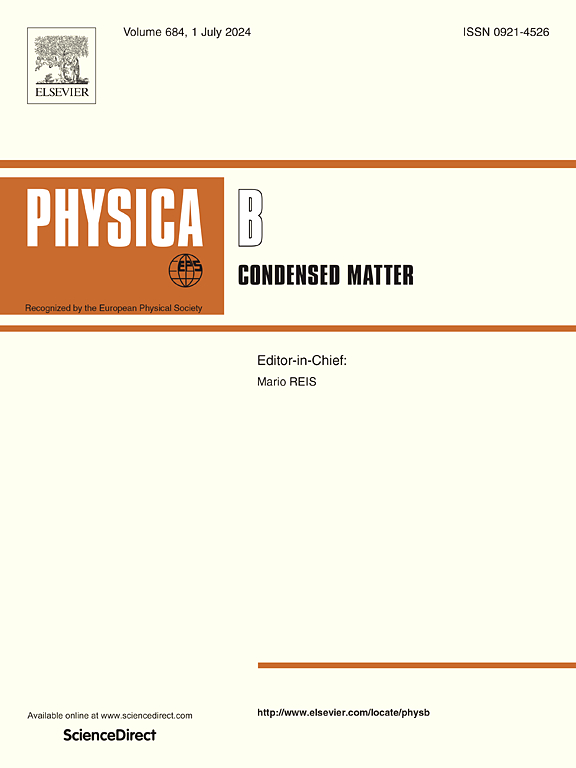Domain formation and correlation effects in quenched uniaxial ferroelectrics: A stochastic model perspective
IF 2.8
3区 物理与天体物理
Q2 PHYSICS, CONDENSED MATTER
引用次数: 0
Abstract
The stochastic analysis of the polarization domain structures, emerging after quenching from a paraelectric to a ferroelectric state, in terms of the polarization correlation functions and their Fourier transforms is a fast and effective tool of the materials structure characterization. In spite of a significant volume of experimental data accumulated over the last three decades for the model uniaxial ferroelectric triglycine sulfate, there were no theoretical tools to comprehend these data until now. This work summarizes the recent progress in understanding of the experiments by means of the original stochastic model of polarization structure formation based on the Landau-Ginzburg-Devonshire theory and the Gauss random field concept assuming the predominance of the quenched polarization disorder over the thermal fluctuations. The system of integrodifferential equations for correlation functions of random polarization and electric field turns out to be analytically solvable. The model provides explanations to a range of experimental results on the polarization formation kinetics including the time-dependent correlation lengths and correlation functions on the macroscopic spatial and time scales. Notably, it predicts the dependence of the ferroelectric coercive field on the initial disordered state characteristics, which can be controlled by quenching parameters like the initial temperature and the cooling rate, thus paving the way for tailoring the functional properties of the material.
淬火单轴铁电体的畴形成和相关效应:一个随机模型的视角
从准电态到铁电态淬火后出现的极化畴结构的极化相关函数及其傅里叶变换的随机分析是表征材料结构的一种快速有效的工具。尽管在过去的三十年中积累了大量的单轴铁电硫酸甘油三酯模型的实验数据,但直到现在还没有理论工具来理解这些数据。本文总结了基于Landau-Ginzburg-Devonshire理论和高斯随机场概念的极化结构形成的原始随机模型在实验中的最新进展,该模型假设极化失序在热波动中占主导地位。证明了随机极化与电场相关函数的积分微分方程组是解析可解的。该模型解释了极化形成动力学的一系列实验结果,包括在宏观空间和时间尺度上的随时间变化的相关长度和相关函数。值得注意的是,它预测了铁电矫顽场对初始无序态特性的依赖关系,这可以通过初始温度和冷却速率等淬火参数来控制,从而为定制材料的功能特性铺平了道路。
本文章由计算机程序翻译,如有差异,请以英文原文为准。
求助全文
约1分钟内获得全文
求助全文
来源期刊

Physica B-condensed Matter
物理-物理:凝聚态物理
CiteScore
4.90
自引率
7.10%
发文量
703
审稿时长
44 days
期刊介绍:
Physica B: Condensed Matter comprises all condensed matter and material physics that involve theoretical, computational and experimental work.
Papers should contain further developments and a proper discussion on the physics of experimental or theoretical results in one of the following areas:
-Magnetism
-Materials physics
-Nanostructures and nanomaterials
-Optics and optical materials
-Quantum materials
-Semiconductors
-Strongly correlated systems
-Superconductivity
-Surfaces and interfaces
 求助内容:
求助内容: 应助结果提醒方式:
应助结果提醒方式:


